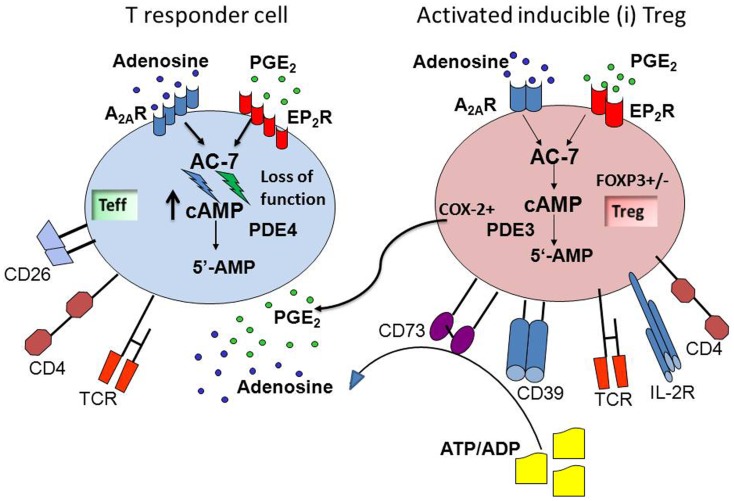Figure 1.
ADO and PGE2 collaborate in mediating suppression in the tumor microenvironment. Inducible (i)Treg are activated in the tumor microenvironment, co-express CD39 and CD73, and produce ADO via hydrolysis of exogenous ATP/ADP. These Treg also up-regulate COX-2 expression and produce PGE2. These two factors, ADO and PGE2, are abundant in the tumor microenvironment, which is strongly immunosuppressive. The G-protein-coupled ADO and PGE2 receptors on responder T cells receive and process the cognate signals that activate adenylate cyclase-7 (AC-7) and lead to an increase in intracellular levels and activation of 3′,5′-cAMP. This results in suppression of cellular functions in responder T cells. The cooperation between ADO and PGE2 is mediated at the level of the AC-7, which together with cellular phosphodiesterase (PDE4) is responsible for regulating 3′,5′-cAMP levels in cells. The ADO and PGE2-mediated cooperative inhibition of T effector functions via up-regulation of 3′,5′-cAMP levels represents one of the mechanisms utilized by iTreg for inducing immune suppression.

